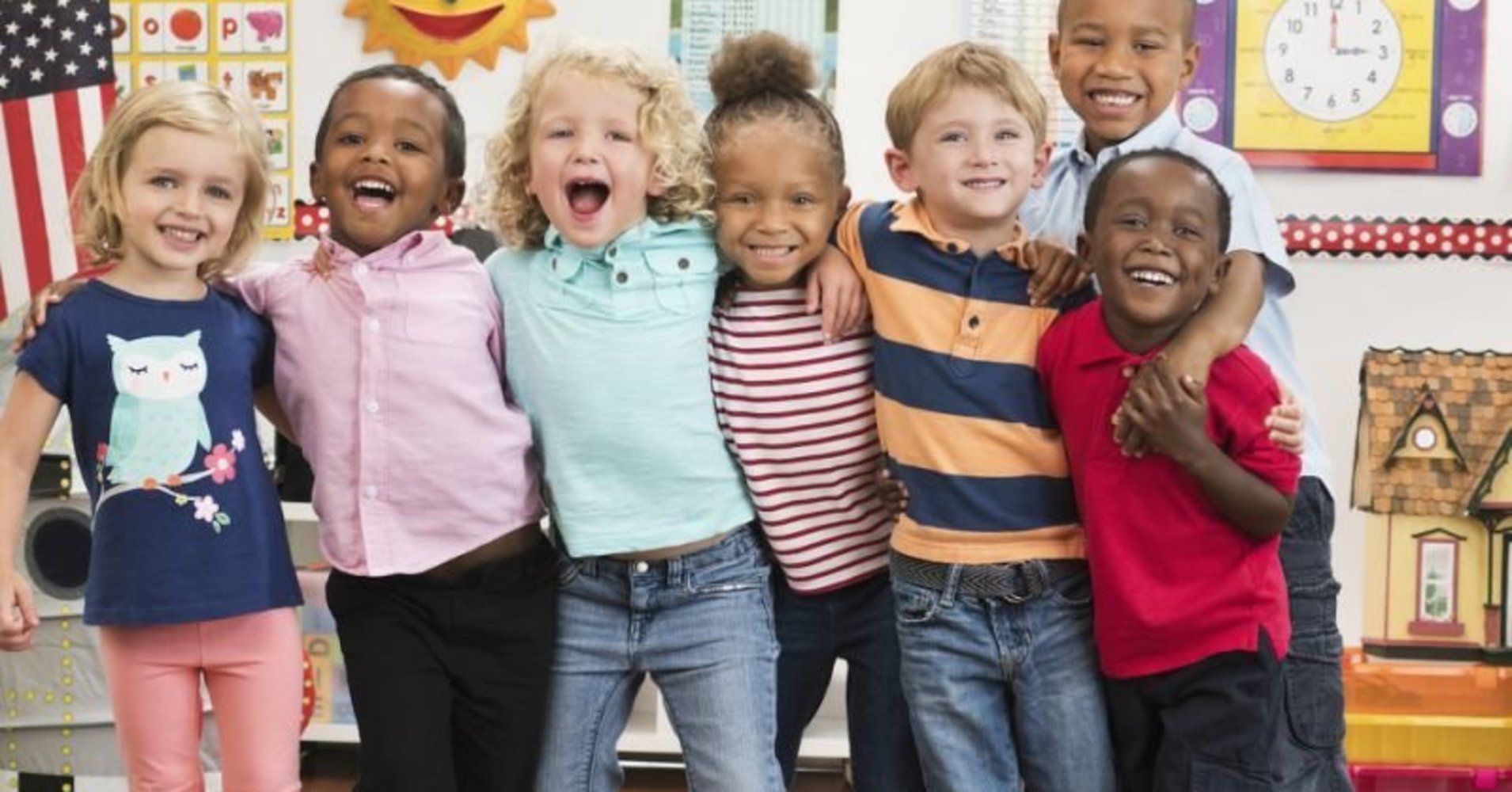[ad_1]

“Love the skin you’re in.”
That’s the goal that kindergarten teacher Aeriale Johnson wants to teach her class this year — and she’s well on her way.
Johnson, who kicked off the school year last week at Washington Elementary School in San Jose, Calif., shared her message in a tweet on Aug. 23, along with her first class project: skin-color paint. Not merely “brown” or “tan” skin color, either. Instead, Johnson had each student create a custom pigment to match their own flesh.
Along with the paint, she shared images of a bell hooks book titled Skin Again and another one titled The Skin You Live In, along with a conversation prompt that asked, “In what ways does the color of our skin influence who we are and what place we are in the world?”
People on Twitter applauded Johnson for her idea, with over 1,000 of them liking and retweeting her photos. Many said they loved the idea and would do the same with their own classrooms.
Aeriale told one of her fans that to make the paint, all the kids started with a base of brown or peach.
“Then, in small groups, added white, yellow, red, dark brown and/or green to get to just the right hue,” she wrote. “They looked like they were at Ulta trying to find foundation.”
She also tweeted that the conversations her project sparked were “great.”
With the beauty industry finally coming around to diversity, especially with women of color like Rihanna and her inclusive Fenty Beauty line, the equal importance of all skin tones is becoming more mainstream. But that market is an older makeup-wearing crowd — and the need for self-love among oppressed groups is still very much needed among kids.
It’s all to say that acknowledging skin color earlier, especially with younger children of color, can have a huge impact. According to Johnson’s own school’s School Accountability Report from the 2016-2017 school year, 95.7 percent of the students are classified as Hispanic while 1.3 percent are black and 1.1 percent are white.
“Thinking critically about stereotypes, prejudice, and discrimination takes away barriers to comfortable and respectful interactions with a wide range of people and gives children a tool to resist negative messages about their identities,” authors Louise Derman-Sparks and Julie Olsen Edwards explained in a blog for Teaching for Change, an organization dedicated to bridging the gap between classrooms and social awareness. The post is an excerpt from a book they’ve written on the subject, called Anti-Bias Education for Young Children and Ourselves.
They say that activities about racial differences like varying “skin color” paints can help students learn to value the differences amongst themselves, but also what makes them unique too.
One tweeter responded to Johnson’s post with her own story about skin color education in the classroom:
However, kindergarteners are still kindergartners, and the art project wasn’t a completely serious affair.
“My favorite was the little boy who said, ‘I look like chocolate cake!’” Johnson tweeted.
More from Yahoo LIfestyle:
[ad_2]
Source link

